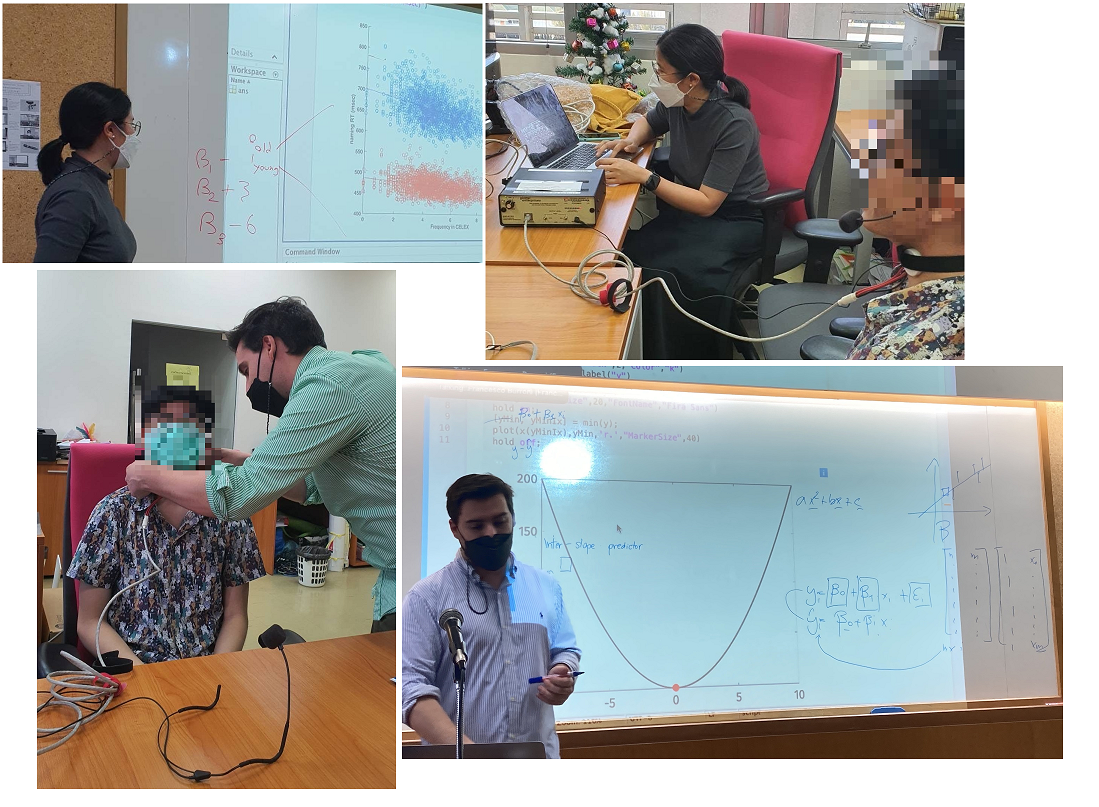News
Katherine Blake Accepts Position at Amazon Alexa AI
We are proud to announce that Katie Blake has accepted a position as a Language Data Researcher at Amazon. She will join the Alexa AI team during summer 2022.
Katie has just defended her dissertation titled: "Phonological markedness effects on noun-adjective ordering", and she will complete her Ph.D. and graduate this May.
Congratulations, Katie - we will miss you!
18th April 2022

PhD Candidates Sireemas Maspong and Francesco Burroni are teaching & conducting research in Thailand
PhD Candidates Sireemas Maspong and Francesco Burroni are now teaching & conducting research in Thailand.
Their field research involves electroglottograph measurements of Thai vocalizations.
17th March 2022
Francesco Burroni & Simone De Lemos presents paper at the 50th Linguistic Symposium on Romance Languages
On July 2nd, 2020 PhD candidates Francesco Burroni & Simone De Lemos presented a paper at the 50th Linguistic Symposium on Romance Languages titled: "A unified account for morphologically-governed stress systems in Romance"
8th March 2022
Seung-Eun Kim & Dr. Sam Tilsen present poster at ASA
On November 29, 2021 PhD Candidate Seung-Eun Kim presented a poster titled "Evidence for F0 preplanning with delayed stimuli" at The 181st Meeting of the Acoustical Society of America.
The poster - titled Evidence for F0 Preplanning With Delayed Stimuli, presents data suggesting that speakers plan F0 targets and range before production, and such planning restricts subsequent control of F0.
Abstract:
A sentence production experiment was conducted to investigate F0 preplanning, specifically examining whether speakers plan pitch targets according to utterance length and whether preplanning limits dynamic control of pitch range.
The experiment used a novel elicitation method in which visual stimuli that cue part of the utterance are delayed so that participants initiate the utterance without knowledge of its length.
Participants read sentences in which the subject noun phrase was composed of one, two, or three conjoined noun phrases with controlled lexical and phonological content A72 J. Acoust. Soc. Am., Vol. 150, No. 4, Pt. 2, October 2021 181st Meeting of the Acoustical Society of America A72 (e.g. Eight red weasels and nine green rhinos and eight blue llamas live in the zoo).
On half of the trials with two and three noun phrases, the presentation of the visual stimuli that cued non-initial phrases (e.g., nine green rhinos and eight blue llamas) was delayed until after detection of utterance initiation. The effects of length and delay on F0 measures were analyzed.
The results showed the length effect; the utterance-initial F0 peak was highest when three phrases were presented initially and lowest when one phrase was presented initially.
Moreover, the utterance-initial peak in delayed stimuli was similar to that of the single phrase stimuli. In non-initial phrases, the pitch range of the delayed stimuli was constrained such that the F0 peak of the stimuli without delay was higher than those with delay.
The findings suggest that speakers plan F0 targets and range before production, and such planning restricts subsequent control of F0.
8th March 2022
